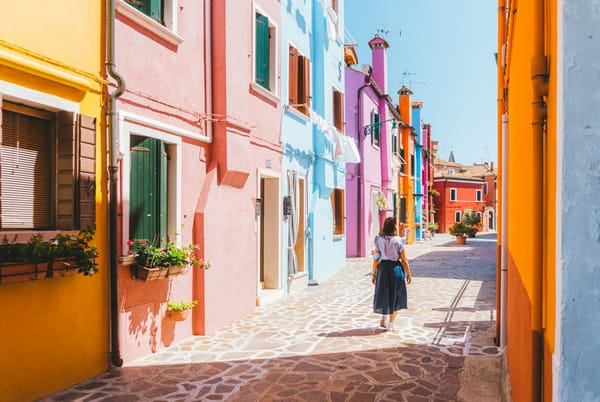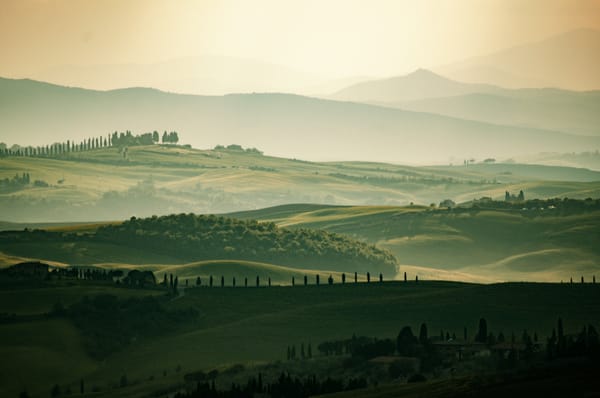A journey through Italy is a journey through time, a deeply personal odyssey into the heart of Western culture, art, and the very concept of la dolce vita. For centuries, it has been the ultimate destination for the curious soul, a pilgrimage not of religion, but of enlightenment and beauty. And for the modern traveler seeking the quintessential Italian experience, the classic triumvirate of Rome, Florence, and Venice remains an unparalleled rite of passage. This is not merely a trip; it is an immersion into three distinct worlds, each a capital of its own powerful narrative. It’s a pilgrimage to the cradle of empires that laid the foundations of law and society, the birthplace of the Renaissance that redefined human potential, and a surreal city built on water, defying logic and inspiring dreams for a millennium.
This 14-day itinerary is built on the belief that travel should be transformative, not just transactional. Moving beyond the surface-level checklist, it offers a structured yet flexible plan to discover Italy's most iconic treasures with the depth and authenticity they deserve. It consciously balances world-famous, unmissable sites with the intimate, local experiences that foster a true connection with a country that has so profoundly shaped the world.
Planning your classic Italian journey
This itinerary is designed as a reference model that can be used as a template for creating your own travel plans. The pacing is intentional, allowing for both major sightseeing and moments of spontaneous discovery—the quiet morning cappuccino in a sun-drenched piazza, the leisurely aperitivo watching the world go by, the unexpected turn down a charming, unnamed alley that reveals a hidden gem.
Logistical overview:
- Arrival City: Rome (Leonardo da Vinci–Fiumicino Airport - FCO)
- Departure City: Venice (Marco Polo Airport - VCE)
- Transportation: Italy’s high-speed train network (Trenitalia’s Frecciarossa or Italo) is the most efficient and scenic way to travel between the major cities. Booking tickets 1-3 months in advance is highly recommended for the best fares. Alternatively, renting a car offers greater flexibility, especially for spontaneous stops and exploring the countryside. However, drivers must be aware of the significant challenges and costs of parking in Rome and Florence.
Please note, the car pick-up location will be different from where you will drop off at the end of your tour. Ask for all the details and related costs.
For this specific itinerary, a car is most beneficial for the Florence-Tuscany portion of the trip. - Pacing: 5 nights in Rome, 4 nights in Florence (with a day trip to Tuscany), and 4 nights in Venice. This allocation provides ample time for exploration and minimizes the stress of constant transit.
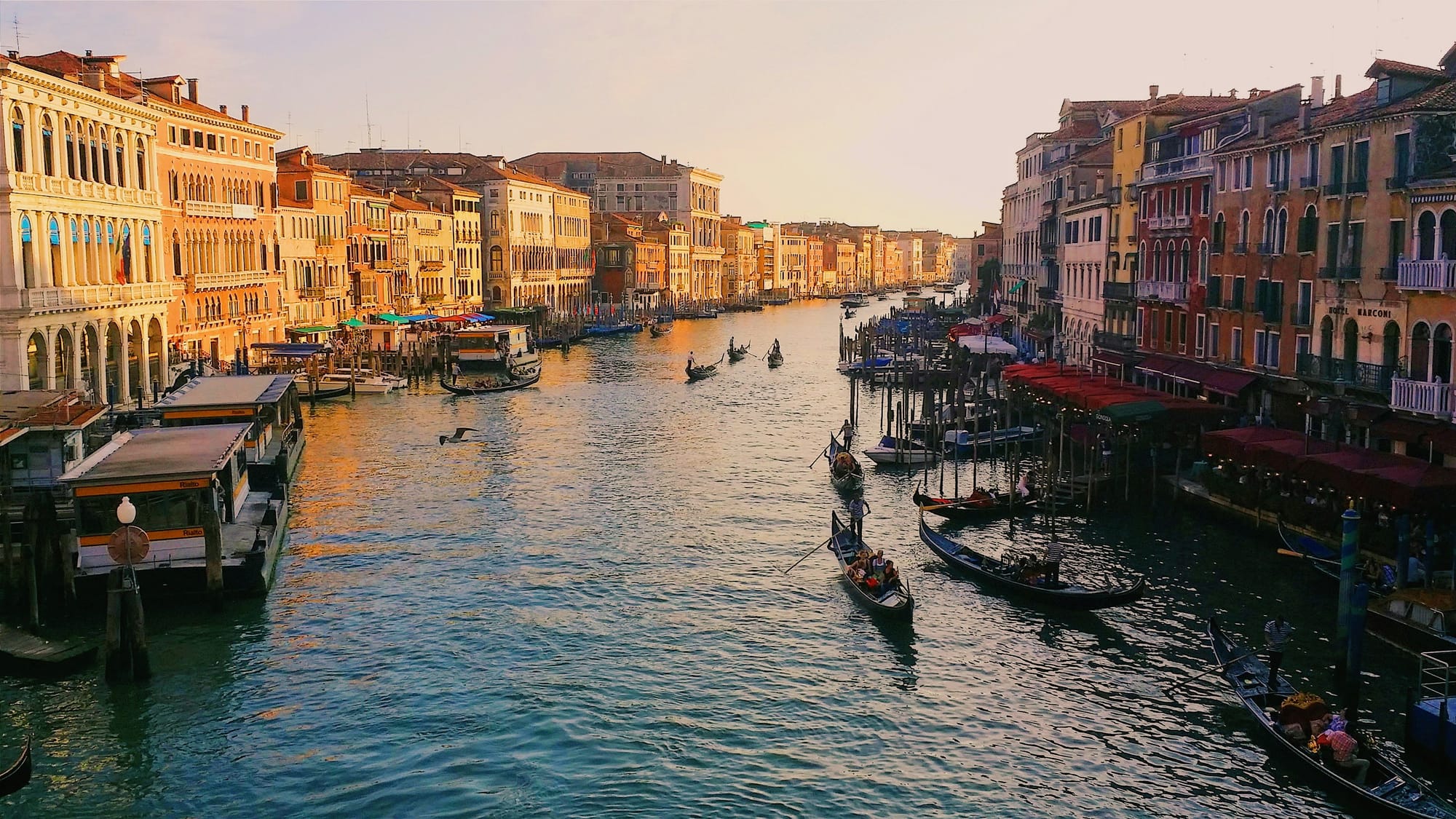
Part I: the eternal city of Rome (days 1-5)
Rome is not just a city; it is a living, breathing chronicle of Western history, a sprawling metropolis where millennia of ambition, faith, and artistry collide on every corner. To walk through Rome is to walk through layers of time itself. An ancient column stands casually beside a Renaissance palace, which in turn houses a contemporary boutique. Vespas buzz around imperial forums, and the scent of espresso drifts from cafés built into the walls of ancient structures. It is a city of breathtaking juxtapositions and glorious chaos. The key to conquering Rome is not to fight this energy, but to embrace it. By exploring it neighborhood by neighborhood, one can begin to understand its complex personality—at once imperial, papal, and intensely modern.
Day 1: Arrival in Rome & the twilight introduction
Upon arriving at FCO, a pre-booked private transfer or the Leonardo Express train to Termini Station offers the most seamless transition into the city. After checking into your accommodation—perhaps a boutique hotel in the charming Trastevere district or a stylish guesthouse near the Pantheon—the first evening is for acclimation.
As dusk settles, embark on a gentle passeggiata (leisurely stroll). Begin at the Spanish Steps, making your way to the Trevi Fountain. The fountain is a spectacle, but its magic is most potent at night when the crowds thin slightly and the travertine gods are illuminated. Continue to the Pantheon, a marvel of ancient engineering. Its sheer scale and oculus, open to the heavens, are humbling. Conclude the evening with a classic Roman dinner in a trattoria nearby, indulging in cacio e pepe or amatriciana.
Day 2: Imperial Rome – Gladiators and emperors
Today is dedicated to the monumental heart of the Roman Empire. The key to this day is an early start and pre-booked tickets.
- Morning: Begin at the Colosseum. A guided tour or an "underground" tour provides invaluable context, bringing the stories of gladiators and spectators to life in a way that a simple walk-through cannot.
- Midday: Ascend the Palatine Hill, the mythical founding place of Rome and the residence of its emperors. The sprawling ruins, shaded by umbrella pines, offer panoramic views of the city and the Roman Forum below.
- Afternoon: Descend into the Roman Forum, the epicenter of ancient Roman public life. Walk the Via Sacra, where triumphal processions once marched, and absorb the history embedded in the temples of Saturn, Vesta, and the Arch of Titus.
Day 3: The Vatican City – faith and masterpieces
A state within a city, the Vatican is a pilgrimage site for both the faithful and the art lover. This is another day where early, pre-booked "skip-the-line" access is non-negotiable.
- Morning: The Vatican Museums are a labyrinth of artistic treasures. While it's impossible to see everything, key highlights include the Raphael Rooms and the Gallery of Maps. The journey culminates in the Sistine Chapel. Allow ample time to sit and absorb Michelangelo’s breathtaking frescoes. An early access tour, before the general public is admitted, can provide a more serene and profound experience.
- Afternoon: From the chapel, a direct passage leads into St. Peter's Basilica, the largest church in Christendom. Stand beneath Michelangelo’s magnificent dome (a climb to the top offers an unforgettable view of St. Peter's Square) and experience the grandeur of Bernini’s baldachin over the papal altar.
Day 4: Borghese gallery & authentic roman flavors
Escape the grand scale for a day of refined art and local life.
- Morning: The Borghese Gallery and Museum requires mandatory reservations, often weeks in advance. This intimate setting houses a stunning collection of masterpieces, most notably Bernini’s dramatic sculptures like Apollo and Daphne and The Rape of Proserpina, which seem to capture emotion in cold marble.
- Afternoon: Immerse yourself in the culinary soul of Rome with a food tour in the Testaccio neighborhood. This authentic, working-class district is considered a gastronomic heartland. A guided tour will introduce you to the local market, historic delis, and trattorias, offering tastes of everything from artisanal cheeses to supplì and slow-cooked Roman stews.
Day 5: Farewell to Rome & travel to Florence
Enjoy a final Roman morning. Perhaps a visit to the vibrant Campo de' Fiori market or a quiet moment in the beautifully preserved neighborhood of the Jewish Ghetto. In the early afternoon, take a high-speed train from Roma Termini to Florence's Santa Maria Novella (SMN) station. The journey takes approximately 1 hour and 40 minutes, transitioning you from imperial grandeur to the heart of the Renaissance. For those traveling by car, the drive takes approximately 3 to 4 hours and offers the chance to visit scenic towns like Orvieto or Montepulciano along the way; just be sure to select accommodation in Florence with parking, preferably located outside the central ZTL.
- Learn more about Rome with the help of our dedicated guides.
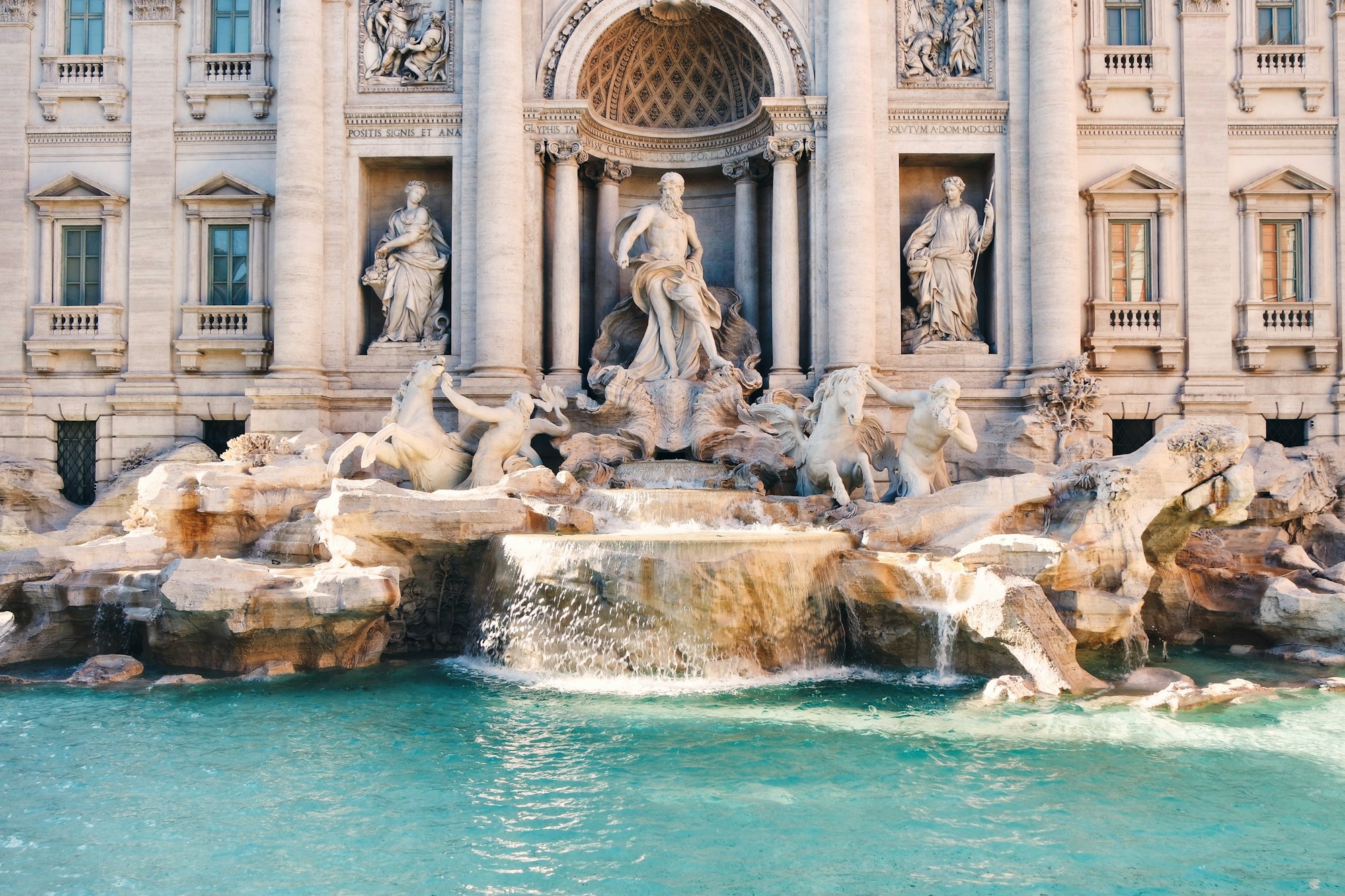
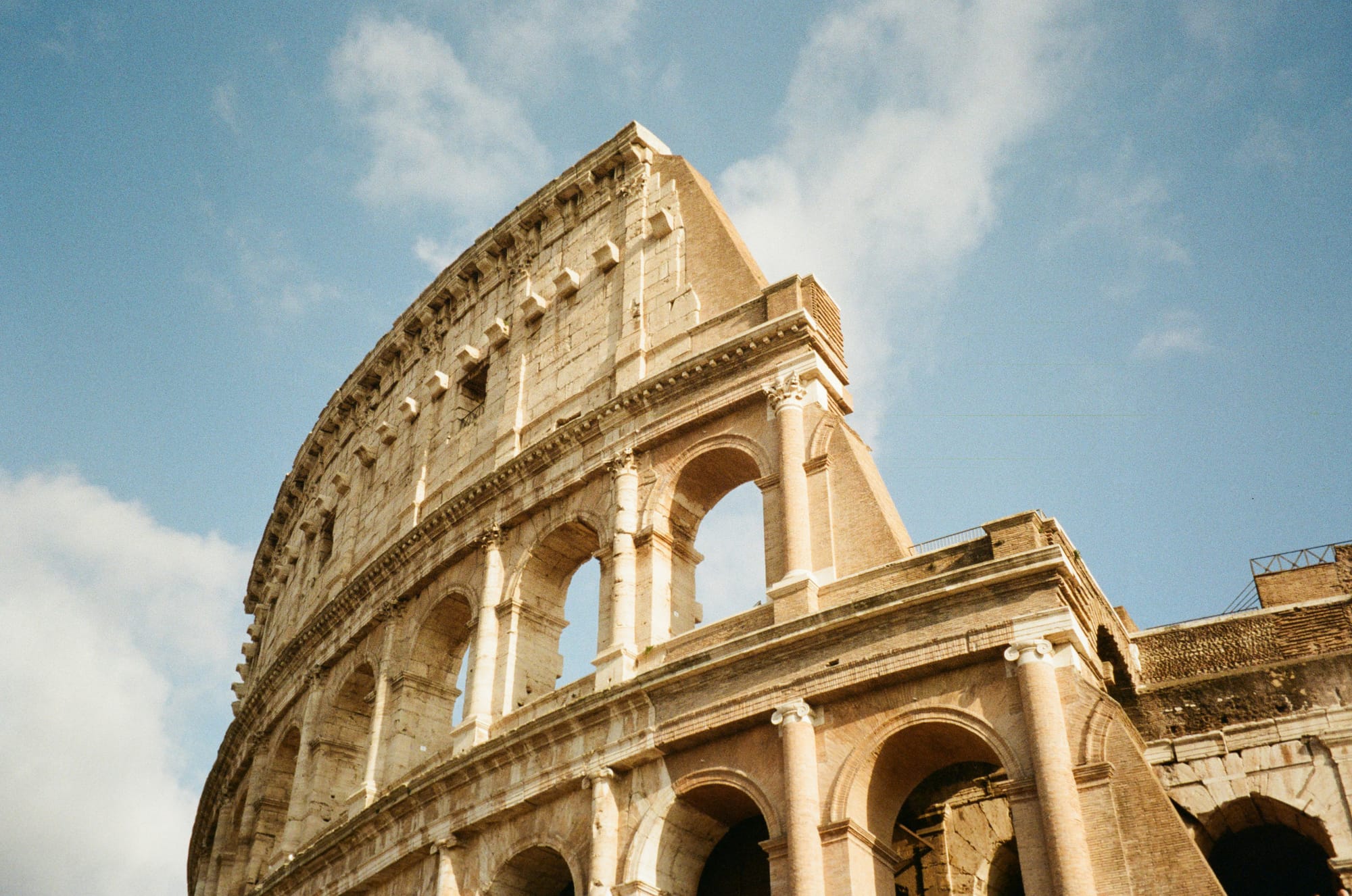
Part II: Florence, the cradle of the Renaissance (Days 5-9)
If Rome is a city of epic history, Florence is one of profound ideas. This is where the Western world was reborn. It is a compact, walkable city, an open-air museum where every street and piazza holds artistic and historical significance. The energy here is different—more intimate, more cerebral. Here, the banking power of the Medici family funded a revolution in human thought, commissioning works that placed mankind at the center of the universe. The result is a city that feels like a perfectly curated gallery. Its skyline, dominated by Brunelleschi’s revolutionary Duomo, is a testament to human ingenuity. To visit Florence is to walk in the footsteps of giants like Leonardo, Michelangelo, and Dante, and to feel the palpable spirit of humanism and enlightenment that still permeates its cobblestoned streets.
Evening (day 5): An introduction to Florence
After settling into your hotel, perhaps in the artisan-rich Oltrarno district, take a sunset stroll to Piazzale Michelangelo. The climb is rewarded with the iconic panoramic view of Florence: the Duomo’s dome, the Ponte Vecchio, and the rolling hills beyond. For dinner, explore the San Niccolò neighborhood at the base of the hill, known for its excellent restaurants.
Day 6: The artistic heart of Florence
Today is an immersion into the masterpieces that defined the Renaissance.
- Morning: Begin at the Galleria dell'Accademia to see Michelangelo's David. Seeing the original transcends all reproductions; the scale, detail, and raw power are awe-inspiring. Book your tickets far in advance.
- Afternoon: Focus on the Piazza del Duomo. Climb Giotto's Bell Tower for a stunning perspective of Brunelleschi’s Dome. Then, enter the magnificent Santa Maria del Fiore Cathedral itself. The true highlight is the pre-booked climb to the top of the Duomo. The ascent through the dome's inner shell is an architectural wonder, and the final view is breathtaking.
- Evening: Attend a classical music performance in a historic church or enjoy an aperitivo in Piazza della Signoria, observing the outdoor sculpture gallery that is the Loggia dei Lanzi.
Day 7: Uffizi Gallery & the Oltrarno artisans
- Morning: Dedicate the morning to the Uffizi Gallery, one of the world's premier art museums. The collection is a comprehensive journey through the evolution of Italian art, featuring seminal works by Giotto, Botticelli, Leonardo da Vinci, and Caravaggio. A timed entry ticket is essential. Focus on the early Renaissance rooms to truly appreciate the artistic revolution that began here.
- Afternoon: Cross the iconic Ponte Vecchio and explore the Oltrarno district. This is the artisanal soul of Florence. Wander the narrow streets and discover the botteghe (workshops) of leatherworkers, bookbinders, jewelers, and sculptors. It’s a glimpse into a tradition of craftsmanship that stretches back centuries.
Day 8: A day in the Tuscan countryside
While Florence is a jewel, its setting is equally enchanting. A day trip into the Chianti region is a must for any visitor.
- Full Day: For the ultimate freedom, this is the perfect day for those who have rented a car. Driving yourself allows for a personalized route through the Chianti Classico wine region, stopping at medieval hilltop towns and family-run wineries at your own pace. Alternatively, for those without a car or who prefer not to drive, arranging a small-group or private tour is an excellent, stress-free option. A quality tour will take you to one or two authentic wineries where you can learn about the Sangiovese grape, tour the cellars, and enjoy guided tastings, often paired with local cheeses and cured meats.
Day 9: Florentine farewells & Journey to Venice
Use the final morning to explore the Medici Chapels, the resting place of the powerful Florentine dynasty, or to browse the vibrant Mercato Centrale for last-minute gastronomic souvenirs. In the afternoon, take a high-speed train from Florence SMN to Venezia Santa Lucia station. The journey of approximately 2 hours and 15 minutes is a dramatic one: you exit the station, and the Grand Canal is directly before you. The drive from Florence to Venice is about 3 hours; drivers must park their car upon arrival at one of the large garages in Piazzale Roma or Tronchetto before entering the city proper, as Venice is completely car-free.
- Learn more about Florence with the help of our city guides.
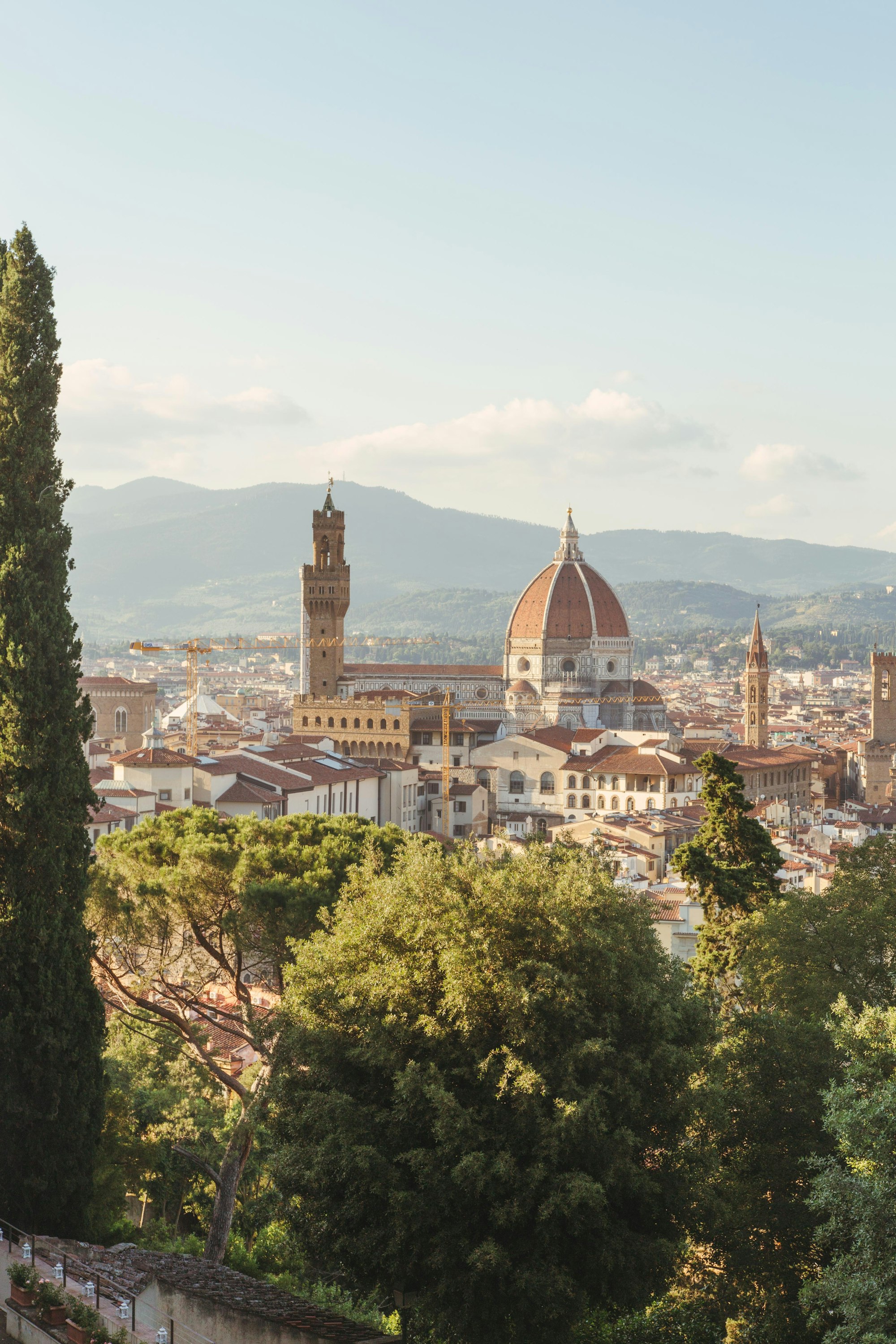
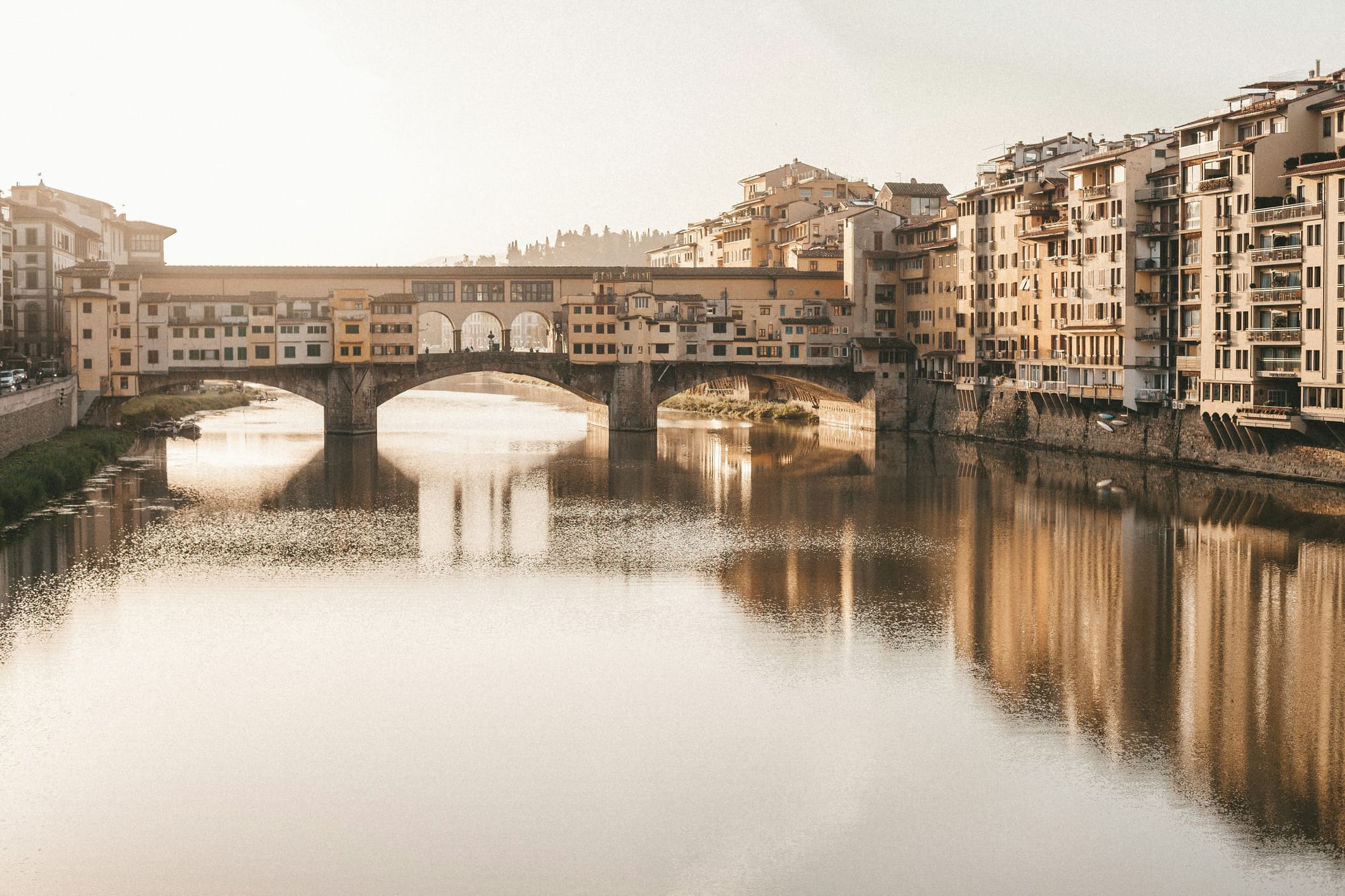
Part III: Venice,the floating city (Days 9-13)
Venice is not a city you simply visit; it's a city you experience with all your senses. It is a sublime and improbable dream, a labyrinth of canals, bridges, and hidden courtyards built entirely on water. There is no sound of traffic here, only the lapping of water against ancient foundations, the chime of church bells, and the haunting cry of a gondolier echoing down a narrow canal. For centuries, La Serenissima—The Most Serene Republic—was a formidable maritime power, a bridge between East and West, and its legacy of wealth and exoticism is etched into every marble palace that lines the Grand Canal. To truly understand Venice, one must surrender to it. Abandon the map, embrace getting lost, and allow the city to reveal its secrets to you one quiet calle and secluded campo at a time. This is where the journey turns inward, becoming a meditation on beauty, decay, and enduring magic.
Evening (Day 9): First impressions of La Serenissima
From the station, a vaporetto (water bus) or a private water taxi is the way to your hotel. There is nothing quite like that first journey along the Grand Canal. After checking in, the evening is for wandering. Find a quiet campo (square), enjoy a Bellini, and listen to the sounds of a city without cars.
Day 10: The heart of Venice – St. Mark’s & Doge’s Palace
- Morning: Head to Piazza San Marco, the historic and social heart of Venice. Visit St. Mark's Basilica, with its astonishing gold mosaics. Book tickets online to avoid the longest queues.
- Afternoon: Explore the Doge's Palace (Palazzo Ducale), the seat of Venetian power for centuries. The tour takes you through opulent state rooms, the armory, and across the infamous Bridge of Sighs into the former prisons. The contrast between the gilded halls of power and the grim cells is striking.
Day 11: Venetian life – markets, gondolas & cicchetti
- Morning: Experience the vibrant, everyday life of Venice at the Rialto Market. See the fishmongers and produce vendors who have supplied the city for centuries.
- Afternoon: While iconic, a gondola ride is a quintessential Venetian experience. For a more hands-on and authentic alternative, consider a Venetian rowing lesson, where you can learn to pilot a traditional batela through the quieter canals.
- Evening: Embark on a cicchetti crawl. Cicchetti are small, tapas-like snacks served in local bars (bàcari). Hop from one bàcaro to another in the Cannaregio or San Polo districts, sampling local specialties and drinking small glasses of wine (ombre) alongside Venetians.
Day 12: Island hopping in the lagoon
Discover the other facets of the Venetian lagoon with a vaporetto day pass.
- Murano: Famous for its glass-making, a visit to a glass factory to see a live demonstration is a must.
- Burano: This vibrant fishing island is a photographer's paradise, with its brightly colored houses. It’s also known for its intricate lacework. Enjoy a seafood lunch at one of the island's excellent trattorias.
- Torcello: The quietest of the three, Torcello was the original center of civilization in the lagoon. Its 7th-century Cathedral of Santa Maria Assunta, with its stunning Byzantine mosaics, offers a sense of profound history and peace.
Day 13: A final Venetian day
Use this day to explore at your own pace. Revisit a favorite spot, explore the contemporary art at the Peggy Guggenheim Collection, or discover the quiet beauty of the Dorsoduro district. As a final farewell, consider a late afternoon concert of Vivaldi's "The Four Seasons," performed in the city where it was composed.
Day 14: Departure from Venice
Depending on your flight schedule, enjoy one last Venetian coffee and pastry. A water bus or pre-booked water taxi will provide a final, scenic journey across the lagoon to Venice Marco Polo Airport (VCE), concluding your ultimate Italian journey.
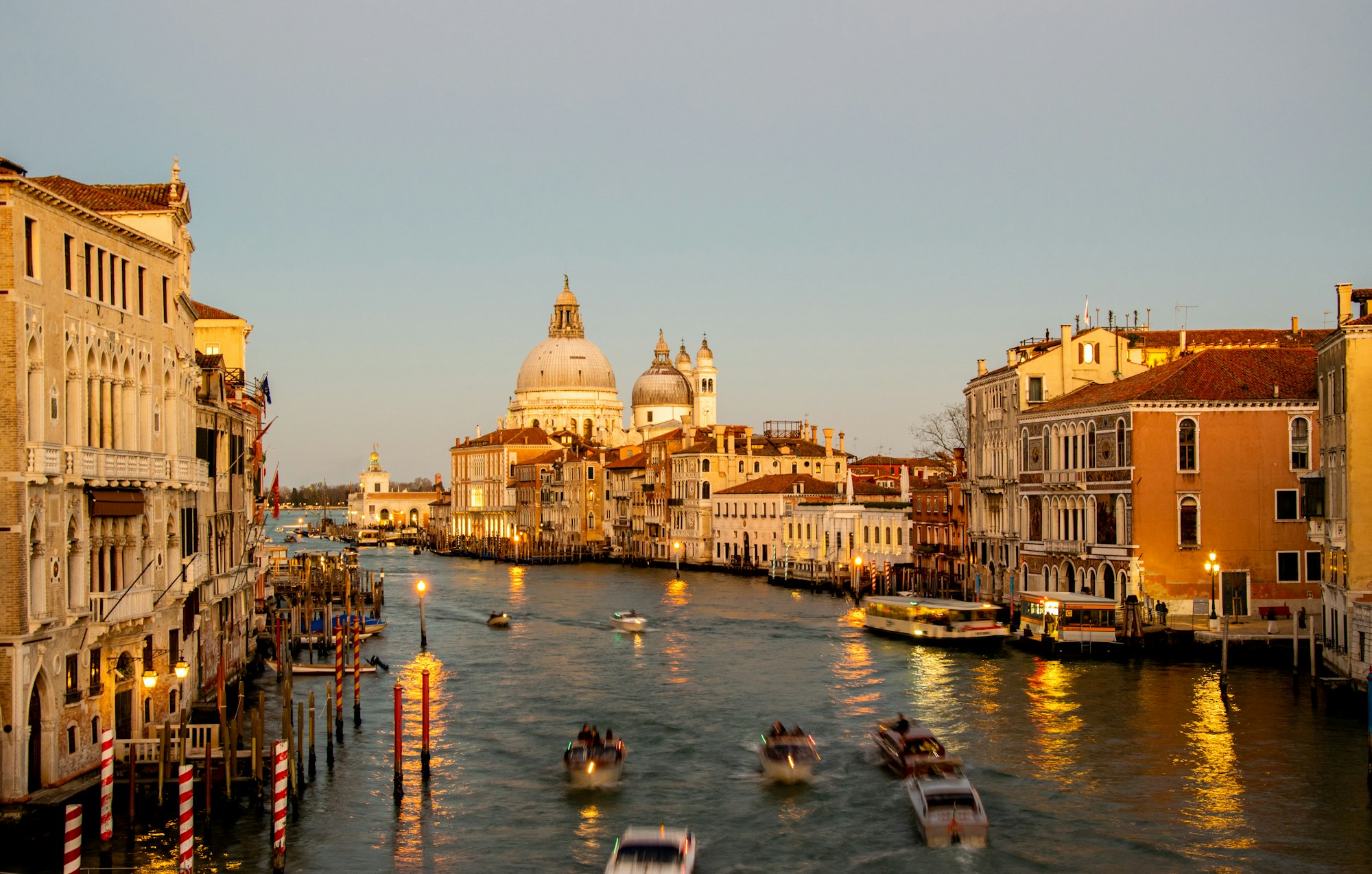
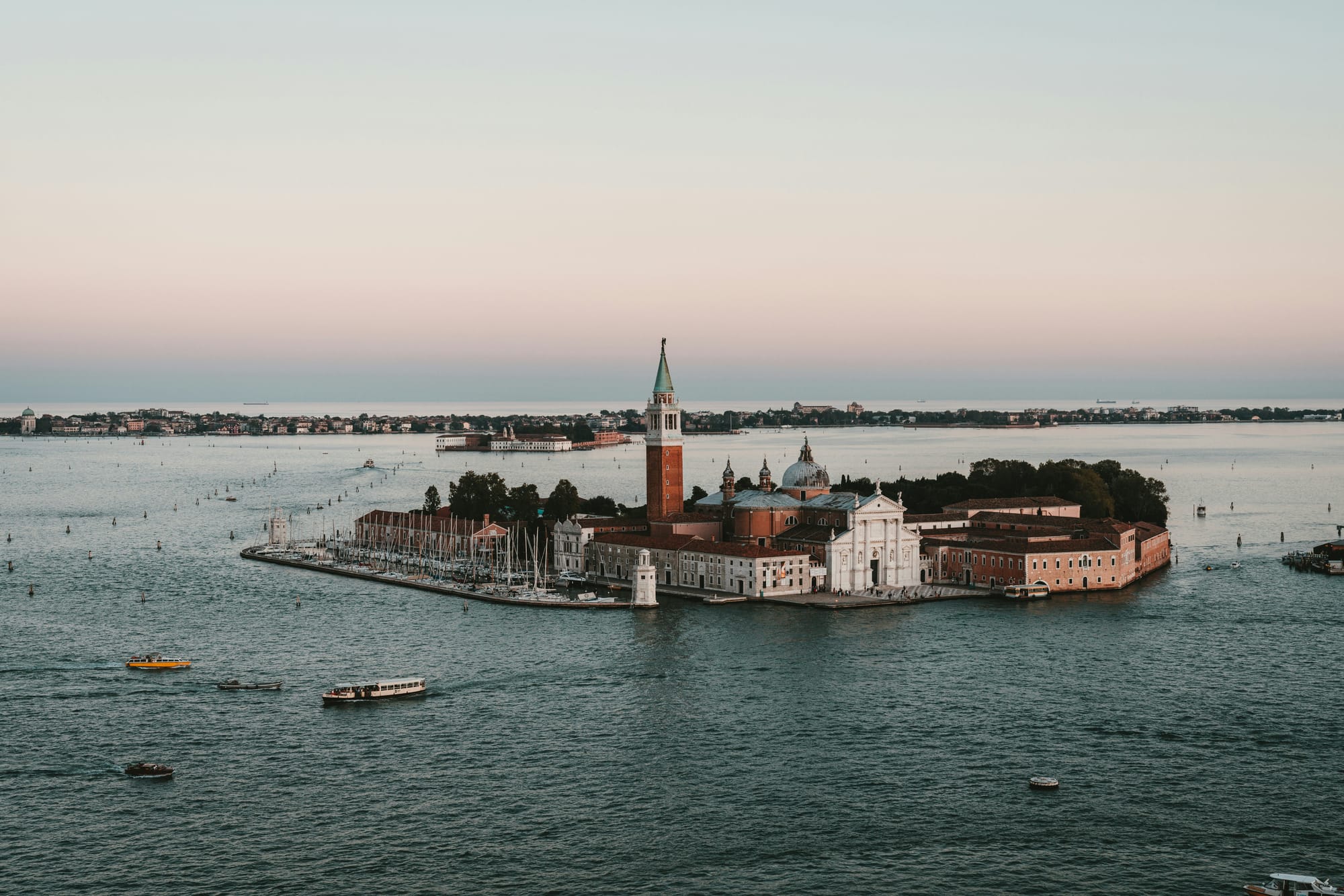
A two-week journey through Rome, Florence, and Venice is more than a simple vacation; it is a rich cultural tapestry woven from threads of history, art, and timeless beauty. You leave Rome with a profound sense of scale and the weight of history. You depart Florence with your eyes opened to a new standard of artistic genius and your intellect stirred. And you float away from Venice with your heart captured by its impossible romance.
This itinerary, while comprehensive, is ultimately just a starting point. To get a good first impression of Italy, we recommend planning for at least 14 days. However, if you don't have much time and still want to explore the Bel Paese, you can find shorter itineraries here.
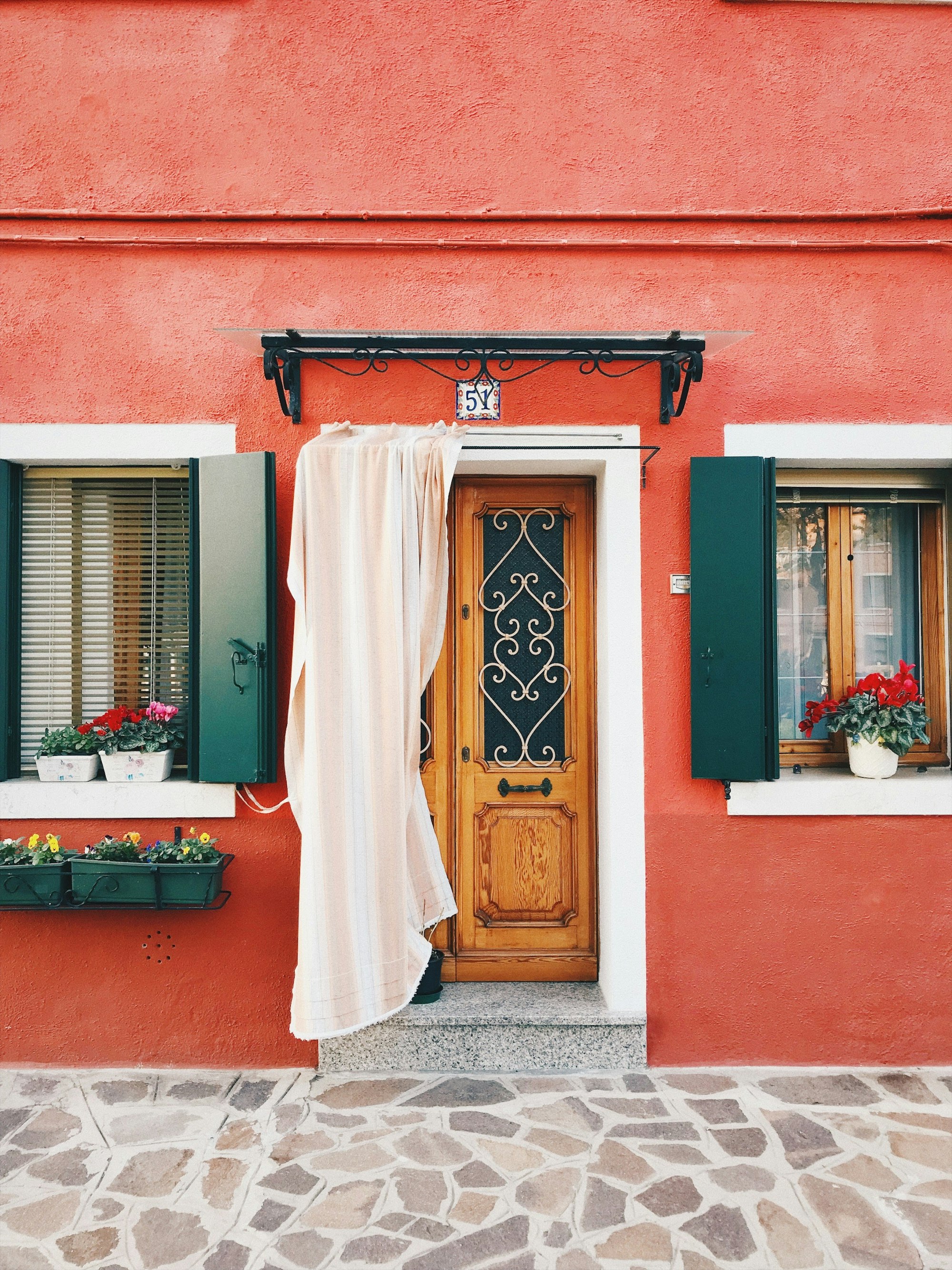
The true magic of Italy is found not just in the destinations, but in the moments between the plans—the unexpected conversation with a shopkeeper, the transcendent taste of a perfect espresso, the singular view from a hidden bridge at sunset. You arrive as a visitor, but you leave with a piece of Italy forever etched in your memory. Buon viaggio!








